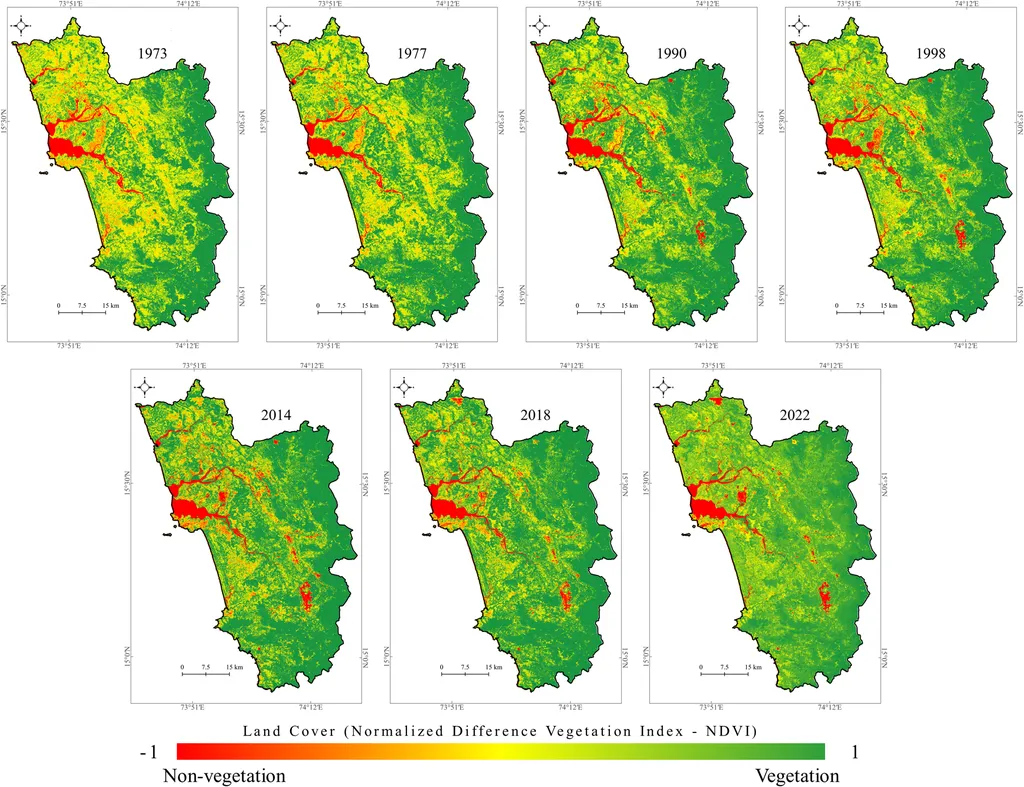In the heart of India’s Rajasthan, a groundbreaking study led by Sonal Jain from the Faculty of Data Science and Analytics at Sir Padampat Singhania University is reshaping our understanding of ecological systems. Jain’s research, published in the journal “Partial Differential Equations in Applied Mathematics” (translated as “Partial Differential Equations in Applied Mathematics”), delves into the dynamic complexity of fractional multispecies ecological systems, offering insights that could have significant implications for the energy sector and beyond.
Jain’s work introduces a novel implicit numerical approach that combines finite-difference techniques with innovative L1 schemes. This method is designed to solve time-fractional reaction–diffusion systems in one and two dimensions, focusing on ecological systems with mixed boundary conditions. “Our goal was to understand the spatiotemporal behavior of predator–prey models, particularly those with a Holling III functional response and prey refuges,” Jain explains.
The study reveals that the predator–prey model under investigation does not exhibit a Turing pattern, which is typically associated with diffusion-driven instability. Instead, the research explores alternative non-Turing patterns through extensive numerical simulations. In scenarios involving two-dimensional subdiffusion, the study observed a variety of spatiotemporal dynamics within the diffusive prey–predator model. “As the availability of prey refuges decreased, the system transitioned from a circular pattern to a spiral, and eventually to a chaotic pattern,” Jain notes.
The research also highlights the impact of the ratio of predator-to-prey diffusion rates. As this ratio increased, the system exhibited a subdiffusive spiral pattern, which then transformed into a spot-like pattern. Eventually, these spots merged to form stripe-like patterns. “These findings underscore the rich and intricate dynamics that can emerge in fractional predator–prey interactions when considering both spatial and temporal factors,” Jain adds.
The study’s implications extend beyond ecological modeling. In the energy sector, understanding complex dynamical systems can lead to more efficient and sustainable resource management. For instance, the insights gained from this research could inform the development of more effective strategies for managing renewable energy sources, which are often subject to similar predator–prey dynamics.
Moreover, the study’s focus on non-Turing patterns and the estimation of Lyapunov exponents provides a robust framework for analyzing the stability and predictability of complex systems. This could be particularly valuable in the energy sector, where the ability to predict and manage system dynamics is crucial for ensuring reliability and efficiency.
As the world grapples with the challenges of climate change and the transition to renewable energy, research like Jain’s offers a glimmer of hope. By unraveling the complexities of ecological systems, we can develop more effective strategies for managing our resources and ensuring a sustainable future. “Our hope is that this research will inspire further exploration of fractional dynamics in ecological and energy systems, leading to innovative solutions that address the pressing challenges of our time,” Jain concludes.
In the ever-evolving landscape of energy and ecology, Jain’s work stands as a testament to the power of mathematical modeling and numerical simulation. As we continue to push the boundaries of our understanding, we open up new possibilities for a more sustainable and resilient future.

